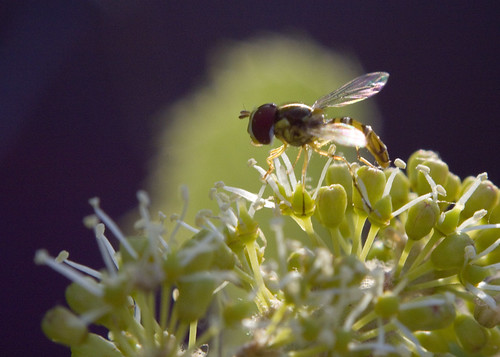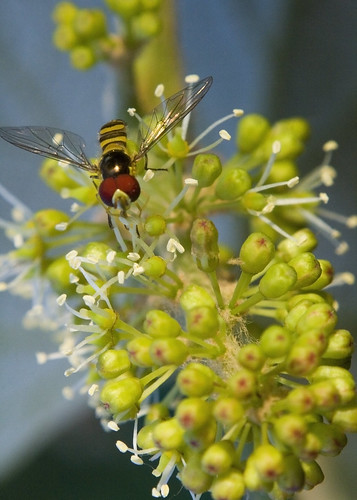Back in 2008, during my semester-long foray back into academia, I (along with everyone else) had a final project due for my Photojournalism 101 course. Being 20 years older than the other students, and being, you know, a real, live, actual journalist, I had a strong suspicion that More Was Expected Of Me than my callow classmates. Nevermind that my photography skills were still marginal. I was taking the course to become a competent, if not decent, photographer, so by golly I'd pull out all the stops.
I'd turn in a cold case crime scene photo essay as my final project.
To be painfully honest, that's not exactly the way things came together. At the time, I put up a brief
blog post about it, but for some reason never went back to expand on the details like I'd originally intended. I blame it on finals. The reason I mention this is because I escaped jury duty this week, in part, by discussing my participation in this excursion. I posted as much on my Facebook Feed, and several people wanted to hear more. Well, here it is.
Back in 2008, Texas State University finally moved forward on a long-planned
Forensic Anthropology Center, a facility dubbed a "body farm" by author Patricia Cromwell. I worked publicity and media relations for the formal opening, which included a lecture by famed forensic anthropologist Bill Bass of the University of Tennessee. Now, realize that access to the Texas State facility is strictly controlled. Other than the opening, media generally isn't allowed, and photography is greatly restricted. I'd gotten to know Drs. Jerry Melbye and Michelle Hamilton, the directors of the program, fairly well, though, and asked if I could shoot the facility during the opening for my photojournalism final project, in exchange for giving them non-commercial usage of my shots. They agreed, and I spent a day dealing with media while shooting as many pictures as I could, whenever I got a opportunity. The opening went well, and the university go some very good press out of the event. The images below show Jerry Melbye, the former director of the facility (he retired last year), reporter Andrew McIntosh doing a stand-up intro to a news story from an open shallow grave and a decomposing swine carcass within a cage to prevent scattering by scavengers. There were half a dozen of the swine about in various stages of decomposition. Let me tell you, those suckers
stank!
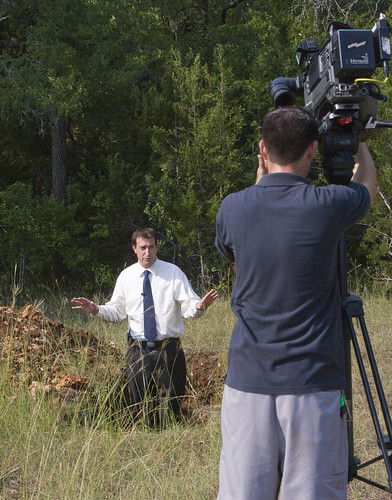
I counted the event a success for myself, especially after my photojournalism instructor--who freelances for the
Austin American-Statesman and
San Antonio Express-News--grumbled that he'd put in a request to shoot the Forensic Anthropology Center himself with the intent of getting images similar to the rotting swine above, and had been denied. So I had a good start, but needed more to finish out the photo essay. I put in another request, asking if I could perhaps shoot a classroom session, or an instructional trip to the center. I was told that might be possible, but they had something better in mind
if they could get permission. Well,
this certainly was cryptic. Two weeks later they filled me in: The forensic graduate students would be accompanying the Texas Rangers to a cold case murder scene in Falls County, and I'd been cleared to accompany the group and photograph the recovery operation (Below, graduate students excavate the site; A spade marks the location of a human pelvis bone).
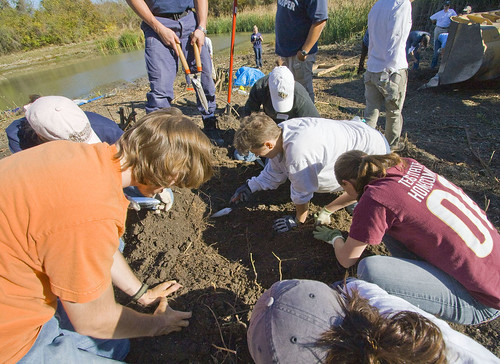
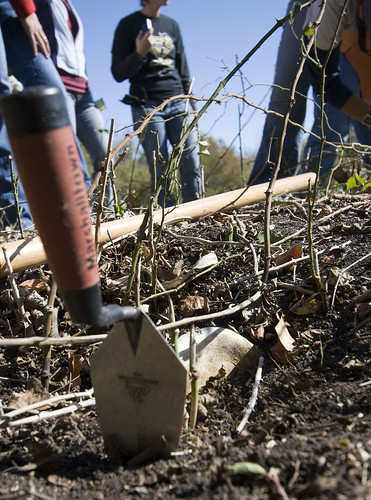
We met in Austin at DPS headquarters, and convoyed up I-35 to Bruceville-Eddy with a pair of Texas Rangers and a dozen forensic anthropology grad students. We almost died in a horrific traffic accident when an 18-wheeler abruptly cut about 20 car off in a construction zone, and I barely avoided getting crushed by driving 50 yards or so through the median. Miraculously, nobody got hurt. At least the DPS would've been on the scene quickly. After that wake-up call, we rendezvoused with the DPS Dive Recovery team at a convenience store and then drove out to the rural location. It is interesting to note that maybe 90 percent of the graduate students are women. And not just any women, but attractive, ambitious and professional women who might just as well be pursuing an MBA or law degree. This is an interesting fact, remarked upon by Melbye, Hamilton and Bass. It seems that 20 years ago, fewer than 10 percent of all forensic anthropology students were women, but with the advent of strong female forensic researchers in television shows such as
The X-Files,
Bones,
CSI and the like, the discipline is now perceived as much more glamorous than it once was, and the gender breakdown has undergone a dramatic reversal. I find this fascinating (Below, outfitted in protective dry suits, members of the Texas State Department of Public Safety Dive Recovery Team churn through pond mud looking for human remains; Graduate student Kristina Gavit searches for evidence).
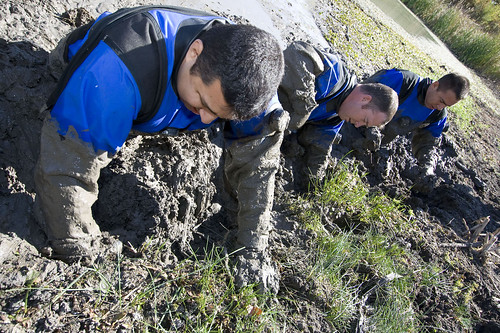
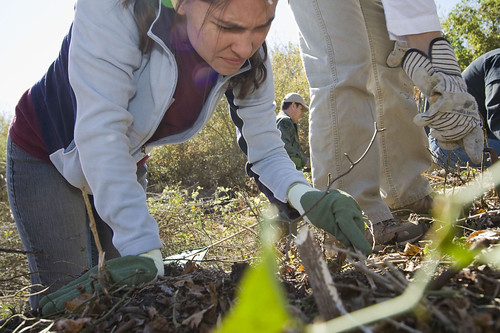
The crime scene scenario, to the best of my recollection, is this: Sometime during the mid- to late-80s, a woman was murdered and buried atop a brush-covered knoll in a shallow grave, adjacent to a pond. She was wrapped and tied in a curtain. Sometime after 2000, the skull was found along the shore and the crime discovered. Students from Baylor University did a forensic search of the site and recovered several bones, but all in all did not do a very thorough job. The identity of the victim remains unknown, although for various reasons the main working theory is that she may have been an immigrant from Asia without any family in the U.S. The goal of the Texas State excavation was to recover as much remains as possible, with a particular emphasis placed on finding the jaw so that a forensic reconstruction artist could produce a fairly accurate image of what the victim may have looked like. Because of the length of time that had elapsed since the original crime, preservation of the site was not a concern. Animals had scattered bones, and the skull itself was believe to have washed down from the knoll during a particularly heavy rain. Chainsaws were used to clear the brush and brambles from the top of the knoll, and a front-end loader was used to speed the excavation (Below, Graduate student Daniel DiMichele displays a recovered human tooth; Members of the Texas State Department of Public Safety Dive Recovery Team, the Falls County Sheriff's Office and the Texas Rangers sift through earth in a front-end loader bucket).

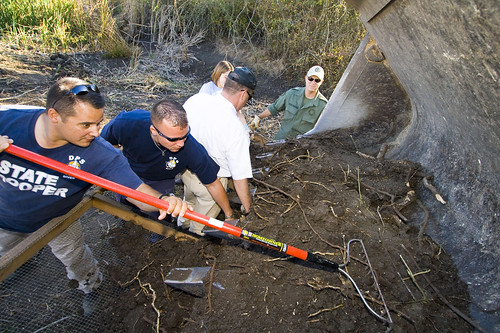
Because the skull had been found on the shoreline, the possibility more bones had washed into the pond was a consideration. The DPS Dive Recovery Team had planned a full dive to search for remains, but because of severe drought conditions, the pond was no more than 3 feet deep and mostly thick, sucking mud. So the divers instead donned their dry suits and spent the day churning through the vile, pasty mess.
That stank pretty bad as well, but their efforts turned up nothing (Below, Investigators use a sieve to sift through dirt and debris; Graduate student Ingrid Marrero, Texas Ranger Marquis Cantu (bottom) and Bradley Whitaker of the Falls County Sheriff's Office use a sieve to sift through dirt and debris while searching for human remains).
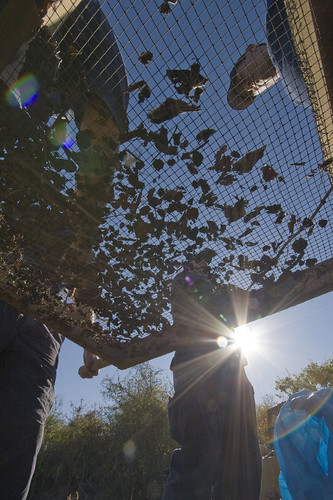
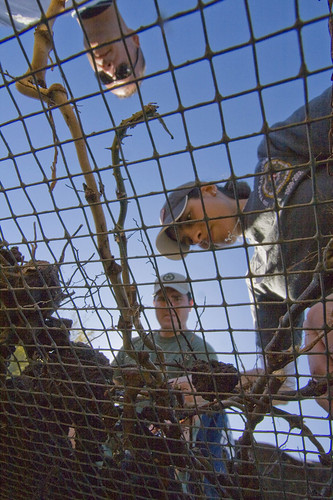
Although it was November, the weather was quite warm and the work was tough. Everyone was sweaty and soon covered in dust. Whenever a piece of remains was found, they were flagged, bagged and cataloged. There was much excitement and enthusiasm among the grad students--they sincerely wanted to find all the remains and contribute to bringing the killer to justice. Handling the recovered remains was a surreal experience. Yes, this had once been a living human being, but 20 years of exposure to the elements had created a philosophical detachment that blunted the horror. Her life was long over, but here were two dozen people volunteering their time in an effort to achieve a measure of justice. Over the course of eight hours, give or take, multiple ribs, vertebrae, teeth, digits and both halves of the pelvis were uncovered, along with buttons, bits of cloth and other artifacts. Sadly, the jaw remained elusive. Despite that disappointment, we left the site that evening tired and sore, but feeling we had accomplished something (Below, raduate students Christopher Hodges, Briana Curtin and Kristina Gavit examine a scrap of clothing uncovered by Connie Parks; Students discovered numerous human vertebrae as well as a pelvis, multiple ribs and other assorted bones and articles of clothing during a search of a cold case crime scene in Falls County, November 14, 2008.)


Sorting and editing the thousand-plus images I shot was a massive effort. I ended up burning three CDs--one for the Forensic Anthropology Center, one for the DPS and one for my class project. You'll be happy to hear that I finished with an A in the course.
Now Playing:

